#cultural hetalia
Text

Hetalia Femslash February
Day 3 - Spider Lilies
Nyo! Japan
Thank you @femslashetalia for hosting! ❤️
#nyotalia#nyo japan#hetalia#hetalia event#cultural hetalia#Aph japan#hws japan#hetalia japan#hetalia asía#hetalia east Asia#japan#spider lily#femtalia24#femslash february#hetalia femslash
84 notes
·
View notes
Text

ROSHHASHANAHTOBERFEST!!! they overlap this year. (I am fully aware that Austria =/= Bavaria but you can't tell me he wouldn't be living it up at Oktoberfest anyway. I should have drawn him in Tracht tbh ah well)
Did you know that those iconic decorative German beer steins you see in every tourist shop are actually a Jewish invention? Neither did I until a few weeks ago. So obviously I wanted to include this - it's something that has gone uncredited for so long, but is still a shining example of how Jewish presence can be seen in so many ways, even in something so stereotypically Germanic that people worked so hard to whitewash. It's a testament to our legacy.
Pomegranates are eaten for the new year (it is said that there are 613 seeds in them which is the number of commandments given) and apples and honey for a "sweet new year." Roderich is also holding a honey cake (made in a Gugelhupfform NATURALLY for him) which also symbolizes the sweet new year, and the round shape symbolizes time as a circle.
I purposefully drew him without glasses, and smiling, for this. Canon notes that his glasses are only there because he thinks he looks plain or uninteresting without them - they're a sign of insecurity and facade. I wanted to show him happy, relaxed, free, and at his most comfortable.
Happy New Year!
#hetalia#hws austria#jrod#i hate the background actually the more i look at it but!! i have RL holiday stuff to attend to lmao#HE IS BEER DRUNK ON A WINE HOLIDAY BECAUSE HE MAKES GOOD DECISIONS#the sages were in disagreement on whether blessings could be made over beer#i am with the guy that says they can be tbh. love beer.#beer makes me relaxed. wine gives me a headache.#alcohol#my art#cultural hetalia
144 notes
·
View notes
Note
do you take requests? (if not feel free to ignore!🙈) how about poland and haiti? they apparently have history together! feel free to see it as romantic❤️ or platonic✨ (if I am not wrong, I think a few haitians today actually have polish ancestry🧐)
Thank you for the request this was super fun to draw!!! :DD and it also taught me something new so thank you for sharing ❤️ ^^
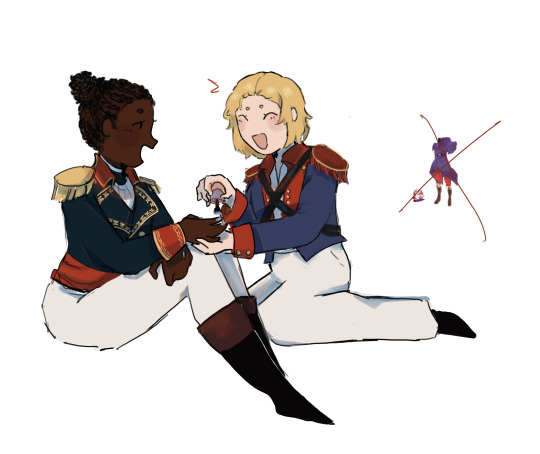
Historical context (copy and pasted from Wikipedia):
"[...] descendants of surviving members of Napoleon's Polish Legionnaires which were forced into combat by Napoleon but later joined the Haitian slaves during the Haitian Revolution. Some 400 to 500 of these Poles are believed to have settled in Haiti after the war. They were given special status as Noir (legally considered to be black, not white despite actual race) and full citizenship under the Haitian constitution by Jean-Jacques Dessalines, the first ruler of an independent Haiti [...]"
The link to the wiki article:
Slightly less anti french version

#Always fun to learn little details like this about countries#I'm not sure if Poland's uniform is fully right but shh its ok#Once again tysm for the ask anon!!#I hope you like the drawing ❤️#My art#My oc#anon ask#Anon#Meitoswords#Historical hetalia#Cultural hetalia#?#Hetalia oc#Aph#Hetalia#Hetalia fanart#Hws#hetalia poland#aph poland#hws poland#Hws haiti#Aph haiti#Hetalia haiti
58 notes
·
View notes
Text
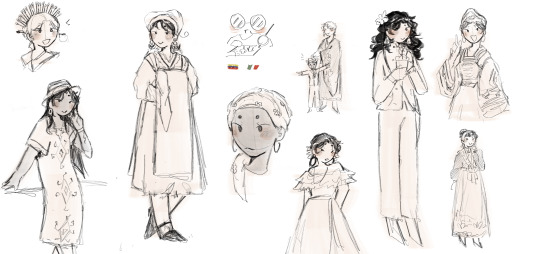
Oooh clothessss oooh
#Ehm#some of this are designs for regions?/states#So....#That's why the hetalia tag is there xd#Hetalia#aph#hws#Hetalia Venezuela#Aph Venezuela#hws Venezuela#Hetalia italy#Aph italy#hws Italy#Venezuela#italy#Cultural hetalia#meitoswords
49 notes
·
View notes
Text


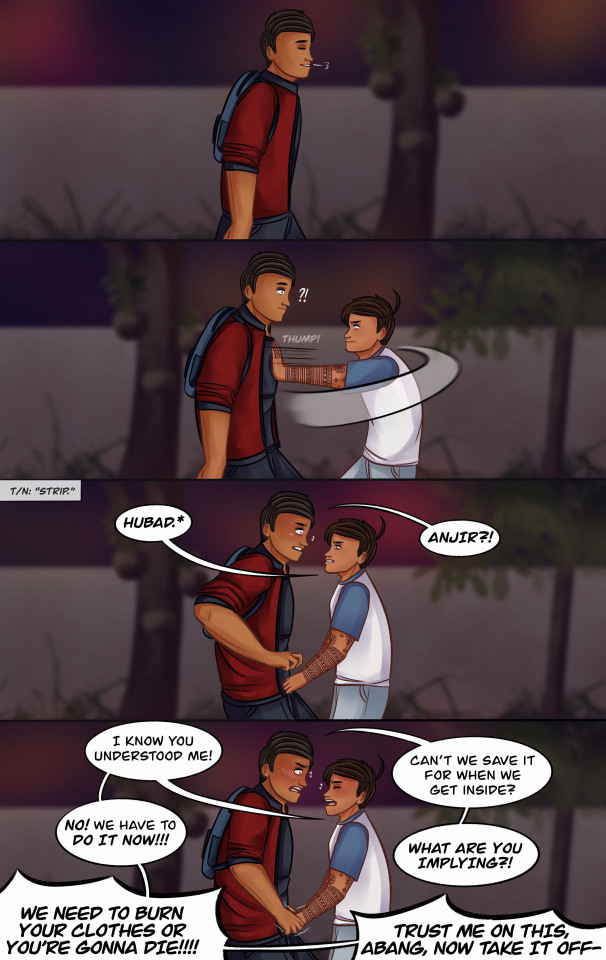
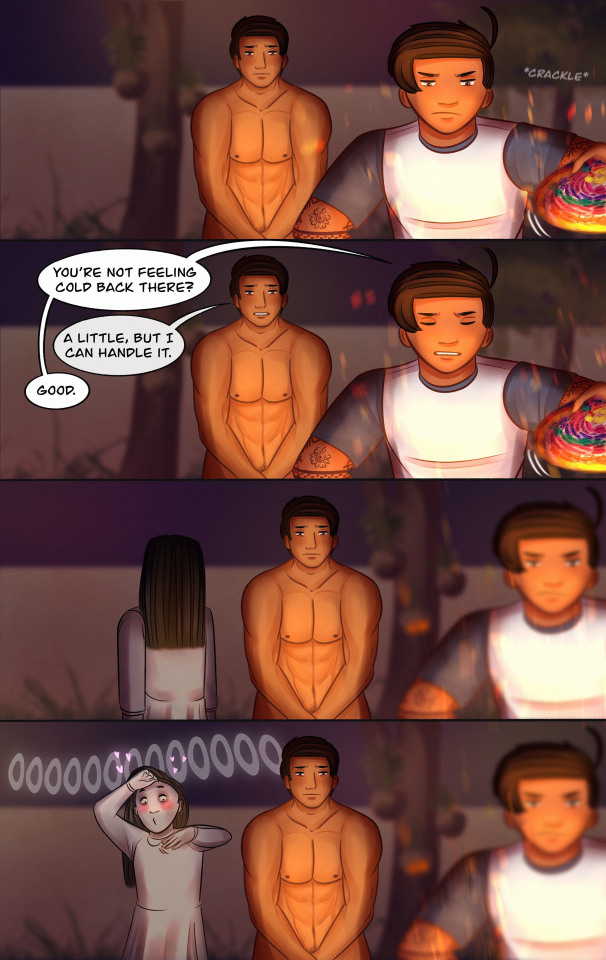
SHEESH, RATTLE & ROLL 👻
There’s an urban ghost story where, if you turn up headless in the rear-view mirror of the vehicle you boarded, you HAVE to burn the clothes you wore to avoid certain death.
The usual format is a lone student riding the jeep back to the dorm. I wrote a different setup for this silly Hetaween 2021 comic.
#hetalia#hetalia world stars#hws indonesia#hws philippines#indophil#cultural hetalia#hetalia indonesia#hetalia philippines
32 notes
·
View notes
Text





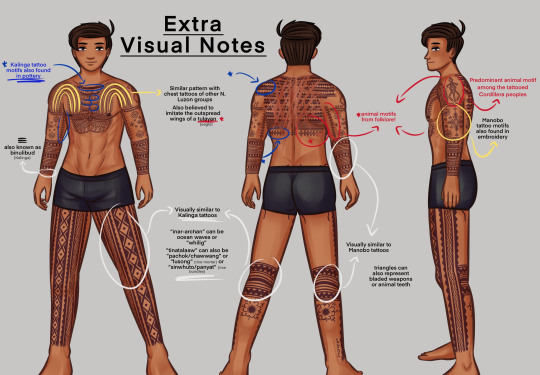

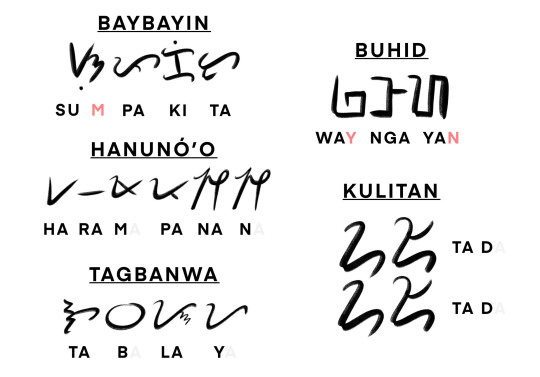
“Not all stories etched with ink and blood were on paper. I just think he gets to keep something.”
Physical Appearance (Tattoos) Headcanons for HWS Philippines
CW: war, violence, mentions of sex
(I'm sorry that sounds like clickbait... it's on the topic of feats that merit a tattoo).
UPDATE (03/09/23): Minor revisions to PH script tattoos
☼ ☼ ☼
Image 02 Description: Pantoron Manobo Pangotoeb (blue). Butbut Kalinga Whatok (red). Precolonial Visayan Batuk (yelllow). PH Scripts: Baybayin, Hanunó'o, Buhid, Kulitan, Tagbanwa (white).
Image 03 Description: Pantoron Manobo Pangotoeb. paloos (monitor lizard). ngipon-ngipon (teeth-like) + pisol (band). tirog (ladder-like). linayon (lines).
Image 04 Description: Precolonial Visayan Batuk. flower (lotus). flower (gumamela). flower (own design). "flowers" can also be interpreted as a "sun." reptile scales. can also be interpreted as "ocean weaves," "rivers," or "mountains."
Image 05 Description: Butbut Kalinga Whatok. inar-archan (ladder). chuyos (chest parallel lines). gayaman (centipede). whilig (mountain). pachok/chawwang (river). tinatalaaw (day & night). tinulipao (snakeskin). tabwhad (snake). inud-uchan (rain). *Labels with no given local terms are from designs modernized for tourists ("family," "traveler/compass/crab").
Image 06 Description: Extra Visual Notes. [encircled in blue] *Kalinga tatoo motifs also found in pottery. [encircled linayon] also known as binulibud (Kalinga). [yellow-highlighted chuyos] Similar pattern with chest tattoos of other N. Luzon groups. Also believed to imitate the outspread wings of a tulayan (eagle). [encircled in red] *animal motifs from folklore! [encircled paloos] Predominant animal motif among the tattooed Cordillera peoples. [encircled yellow] Manobo tattoo motifs also found in embroidery. [leg tattoos encircled in white] Visually similar to Kalinga tattoos. "inar-archan" can be ocean waves or "whilig." "tinatalaaw" can also be "pachok/chawwang" or "lusong" (rice mortar) or "sinwhuto/panyat" (rice bundles). [tattoos around forearm and behind the knee encircled in white] Visually similar to Manobo tattoos. triangles can also represent bladed weapons or animal teeth.
Image 07 description: Butbut Kalinga Whatok. khaman (headaxe). inud-uchan (rain). Hanunó'o.
Age of Eligibility for First Tattooing
Manobo: 10-12 years (pre-puberty)
Kalinga: 15-20 years (“coming of age”)
Visayan: ~20s (adulthood)
Order of Significance
Manobo: N/A; forearms, back, & chest for men
(Only women could tattoo their abdomen and calves as well; interestingly among the 3 styles, tattooing on men's abdomens was sparse, if not left completely blank)
Kalinga: Wrist —> Back of hand —> Arms —> Chest (+option: sides of torso/legs) —> Back —> Face
Visayan: Ankles -> Legs -> Waist -> Chest -> Back -> Face
My idea of tattooing order for Piri would be as such:
Arms, from the wrist (Manobo)
Legs, from the ankles (Visayan)
Chest (Kalinga)
Back (Kalinga)
By tradition, the tattooist decided on the motif, but recipients could also pitch ideas. Piri's script tattoos were his suggestions.
A fully-tattooed arm would take 1 day to complete, while a Kalinga chest whatok was worth 3 days. The tattoo session could even be halted midway, and either the client expressed to resume on another day or simply ended the process altogether. Men would sometimes deliberately hold back on getting tattooed, but this was not without a buildup of peer pressure over time.
Piri got his forearm pangotoeb while young (for a personification) because he wanted to be like the cool, older folks. Poor baby boy would fail to immediately realize how much the process hurt, and he would frequently make up excuses to delay his sessions.
By the time Piri got his leg tattoos, he would gradually fill them up alongside his upper arms, depending on whether he was wandering around the Visayas region or at the Pantaron mountain range down in Mindanao. For sure, Piri received his Kalinga whiing (chest) and dakag* (back) after those parts had been inked.
Notice how I gave him tattoos from Luzon (Kalinga), Visayas, and Mindanao (Manobo)? Hehe.
What constituted getting a tattoo was not exclusive to warfare achievements or headhunting boons. Anything could be a reason for getting a tattoo, as long as the community itself acknowledged it as valid merit.
What exactly did Piri achieve to earn his tattoos? He changes the story every time you ask him.
Was his butt also inked? Yes. I won't show it for fear of unwittingly getting the boot from this platform.
☼ ☼ ☼
Buhid, Tagbanwa, and Kulitan never had a virama (the sign for canceling the inherent vowel). There had been attempts to introduce it in the latter two scripts, but it was never successfully mainstreamed. In writing syllables with canceled vowels, one must retain the original syllable in Tagbanwa and Kulit while you no longer had to write the syllable itself in Buhid. Viramas for Baybayin and Hanunó’o were introduced after the precolonial era, neither of the attempts accomplished by native Filipinos.
In taking these scriptwriting nuances into account, one should enunciate the script as it was being read to discern the word being referred to. Even though it was written as “wa-nga-ya”, a Buhid native would naturally understand it to be read as “way ngayan.” Although anyone could attempt to write in any language with these scripts, I wanted to stick to the intended native tongues to showcase how to properly interpret them.
After doing a guided tour in the National Museum of Anthropology, I opted out of using the "modernized" writing systems in exchange for the "historically utilized" method of not including viramas or writing out a character altogether to eliminate the vowel.
☼ ☼ ☼
TRANSLATIONS
Baybayin: Sumpa Kita (Tagalog) - “I Swear”
Depending on the tone, you could be proclaiming a promise or a curse. I love it.
It was also the phrase that the name of the Philippine national flower, (sampaguita) originated from, which was also one of Indonesia's national flowers (melati putih).
IndoPhil fans, start taking notes.
Kulitan: Tadtad (Kapampangan) - “To cut to small pieces (minced, diced, pinked, etc.)”
There was a saying: "Tadtaran decoman, ing catadtad a mitalandang, iyang maquiasaua queya."
It could be roughly translated as: "They me cut me into a million pieces, but even one of those pieces is still good enough to marry 'the one.'"
Morbid but romantic, and reflective of Piri’s love for Indo (he’d be that cheesy, okay?)
Tagbanwa: “Tablay” - “To cross hills and mountains”
It was a 4-verse song that narrated a variety of topics, ranging from household chores to community gatherings to expeditions to sentiments (positive or negative) for others. Penultimately the tablay served to express “what comes out from the heart.”
That was so quintessential Piri.
Hanunó’o: “Harampanan” - “Discussion”
What was interesting was that the same term referred to both the conversations held in settling disputes and the moment of convening between the parents of a couple to consent to their marriage (or not).
He might be a social butterfly, but he was constantly under pressure to fulfill the role of an intermediary.
Buhid: “Way Ngayan” - “No name”
I initially drew a different word and decided to change it as it didn’t fit for Piri to carry something he could never wield.
Among the highland Tau-Buhid, it was common practice to answer “way ngayan” when outsiders of the community asked for their names. Instead, the outsiders would give a name to the Tau-Buhid being addressed to, and only then can the Tau-Buhid be allowed to speak to them.
It’s funny how the Philippines was a name* christened by an outsider.
*The same goes for my headcanon name for precolonial Piri.
☼ ☼ ☼
The first name in the tattoo styles referred to the specific location of residence of the studied ethnolinguistic group. It was not a strict requirement to note it down at all times, but more often than not these groups identified themselves by their location.
Supposedly the Panay-Bukidnon/Suludnon preserved precolonial Visayan tattooing, but the one source I found online described it to be more of a freestyle practice. I was also unable to find images of the tattoos on the people themselves. Nonetheless, there was the Pintados Festival that paid homage to the titular tattooed warriors.
I wanted to point out the visual similarities because tattooists were also traveling practitioners to find clients for their work. It was a possible explanation for why tattooed people (if not the particular tattoo style) were observed across the Visayan islands as well as parts of southern Luzon. In the late 19th century, some Bagobo people shared that they were tattooed by an outsider practitioner. Whang-od herself used to be a traveling tattooist.
This was speculation on my part but I believed it was also possible that tattooists also took inspiration from other styles. Chest tattoos for men in both the Visayan tattoos and Manobo pangotoeb both had radial designs on the areola (which I did not draw for Piri’s chest tattoos simply because they clashed). Who knows, maybe a Manobo tattooist encountered the Visayans and wanted to create their version? I liked to think that the variations in motifs and pattern combinations could double as a tattooist's signature.
I allowed for a few liberties here and there in drawing some tattoo motifs for Piri because, at the end of the day, inspiration could come from anywhere. One could also say the variation lies in how artists created their visual interpretations of the sources of inspiration. Even the Kalinga tattoos made available for tourists are borrowed imagery from other groups! In the past, one Kalinga warrior had an eagle tattoo on his arm that was based on the image on an American coin.
Tattoos were meant to be unique to the individual. Their value on having to be earned was on the basis that they reflected not just the personal histories (if not necessarily achievements) of the wearer, but such histories must also be acknowledged by the community granting them.
That last bit was important because while anyone could pay to be tattooed (and it would still represent something about you), you would be considered a fake. Hiya (shame) was a thorn that penetrated deeper around these parts. Although only the Manobo did not have a stigma for not being tattooed, the social pressures still left a mark on Piri (literally!)
If one relied only on tattoos as a visual cue, one would be unable to distinguish which groups individuals belonged to from a distance. If every one of the most significant leaders were tattooed in the exact same patterns, it would be impossible to recognize who’s who until they formally introduced themselves (which no one would have the time for in the middle of combat!) The Visayans had a set of tattoos that could be used by all, which implied some designs were restricted only among the best of the best.
This was HWS Philippines. If he’s going to be the star, he needed to stand out from the crowd.
It would, however, be awkward for Piri when he spent time with certain other groups that carried a strong contempt for the ones he received his tattoos under. He would not be exempt from the consequences.
☼ ☼ ☼
Now here was one more reason why artists/designers should not be afraid to modify on the tattoo motifs (as long as one familiarized themselves with the foundations they worked with): The Butbut Kalinga believe it was taboo to copy older designs, all the more if the original recipient was deceased. So in letting a character don some Kalinga whatok, think twice about perfectly copying every last detail from reference image/s!
In the present day, tattoos for visiting tourists from Whang-Od had to make a selection from a prepared guide, all of them modified for a general audience v.s. designs exclusive to esteemed warriors of the past. I used the former for Piri’s Kalinga whatok.
This was where I addressed the elephant in the room.
My understanding of cultural appropriation was that the offense is in cherry-picking culturally significant symbols & practices and then using them out of their intended context by transforming them into pieces that fit the aesthetic criteria of the dominant - and often oppressive - group.
Save for that one taboo, I did not find any other explicitly recorded statement from either the Butbut Kalinga or the Pantoron Manobo forbidding outsiders from using their tattoos. (Mind you, this was all via resources I could access online - screw this pandemic!)
There was also the lingering question regarding the cultural preservation of PH tattooing practices. In the case of the Kalinga whatok, considering that we could not simply reintroduce headhunting in the present day for morality reasons, did that not mean the tattoos had essentially lost their cultural context? If that rendered them invaluable objects, would it not be self-defeating to the purpose of cultural preservation to just let the practice die out?
I sincerely believed it was just as patronizing to assume that even indigenous peoples could adapt and re-contextualize their traditions because it did not fit the (outsider) ideal of preserving their [I am knocking on wood here] "pristine, primitive forms."
Sometimes even good intentions/aspirations could still take away the platform from the ones it was built for.
(I know I just sounded like a hypocrite in saying that so I'm beating you all to it and calling myself out on it.)
☼ ☼ ☼
My biggest motivation for manifesting this headcanon at all was because I did not swim with the fanon of amnesiac Piri. 😭💦
I was at odds with what constituted as a collective (national) memory, all the more when not only was the Philippines as the nation we knew today was a far cry from the "nation" (bayan) that existed 1500+ years ago (and that was if you happened to go there, which I do because I also did not swim with chibi Piri by the time Magellan showed his ass up on our shores).
It sucked that we lost much of the perishable writings from that time, but written works were not the only means of cultural/historical preservation. I also disagreed with the implication that only written works counted as a valid archive.
The pen might be mightier than the sword, but efforts to improve literacy skills were a double-edged sword in itself. While it was important to teach people to be better communicators*, measuring intellectual capacity by literacy skills could get problematic. I condemned this assumption because I sincerely did not believe that precolonial Filipinos being unbothered to keep written records was a sign of their “backwardness.” What if they never felt the need to?
Because why bother writing it all down when you could say it out loud instead! We might not have books and written histories, but we got oral histories! Epics, ballads, hymns, riddles, folklores, you name it! People passed down traditions through storytelling, all the more for all the indigenous natives* residing in the nation that resisted imperialistic rule (not just colonial) for centuries! We were a nation of songbirds! And that was why "Piri chronically online on Twitter" was absolutely valid.
Although it was easy to justify the amnesia take because the colonizers massacred so many people, and without the people, you also lost the very guardians of those memories...in my most honest opinion that...registered poorly in my head.
What of the ones who survived? What of the people who lived to tell their tales?
When did we stop listening?
*More often than not, people grew up to be swayed to unwittingly support imperialistic/capitalist/fascist agendas because very subtle propaganda was discreetly inserted into the lesson plans in their formative education. Criticisms on colonial education deserved their own talk for another day.
☼ ☼ ☼
What constituted a memory was the affection, the emotion that came with certain experiences. It was why some memories persisted while others were easily forgotten. It was why even memory recollection (which indicated an active search) might not necessarily be true or not. Memory, both in itself and the processes surrounding it, did not follow a linear & and straightforward path (and that was already without taking the complexity of neurobiology into account).
While the merits for a tattoo were generally prescribed through specific or notable acts, I noticed that majority of them seem to share one common affection: Passion. The feeling of an intense, compelling desire for something (or someone).
Among the Manobo (today), most of them were compelled by aesthetic reasons in getting a tattoo. The desire to maintain an appearance that would equally leave an impression on others.
Headhunting/warfare was just the easily cited method, but the Kalinga appraised any act that denoted an individual’s bravery & valor. Bravery in fighting the frontlines, fueled by the compelling desire to defend one’s homeland.
Violence** born out of vengeance is also a thing, and vengeance was just passion manifesting negatively.
Precolonial Visayans had names for tattoos that marked an individual’s first-time experience in war…or love (sex, I guess). Two polar forces treated as equals. I think of how Aphrodite/Venus was also a goddess of war. A goddess of passion.
Headhunting could also have gendered notions that display the "mutual dependence" in the dichotomy of "male/female bloodshed." In a study of the Huaulu people (Seram, Indonesia*), they had a taboo where the men could not participate in headhunting if their wives were menstruating or giving birth. This reinforced the idea that women as "bleeding humans" were as powerfully influential as men who were "bleeders of humans."
On a similar note, there was a pervasive belief in certain other groups that headhunting blessed communities with fertile lands (alongside fertile women). Blood as life essence. Blood as a source of vitality.
Sometimes passion is comparable to being a force of vitality. The driving force of life and death.
Hades game Achilles was onto something when he wrote that Aphrodite "may be the mightiest of all [the Olympians]."
It got complicated, however, because headhunting and warfare were also a means of state violence**. The precolonial Visayans were engaged in and subjected to slave raids, born out of the need to harvest labor for trade motivations (fuck capitalism, am I right?). If all the battle experience from such activities counts as a merit for tattoos, what did that make of Piri?
I thought of how even blood was shed during the process of tattooing. In a way, Piri’s tattoos also functioned as a reminder of all the blood that was shed for him. A reminder of all the people who died for their passions.
Whether it was a price worth paying or not is a conflict he may never find a resolution for.
*They were comparable to the Buaya (Kalinga) in the shared gendered aspect in headhunting. While this implies a cultural backing to Beyer's Wave Migration Theory, the latter was contested by W.H. Scott. In the cited studies below that concentrated on Kalinga tattooing, there were no further details given regarding any connected symbolisms to headhunting.
**Just so we’re all clear, me conducting frank discussions on the topic of violence DID NOT equate to me condoning violence. Remember that Kalinga tattooing diminished because headhunting was outlawed for its nature as an act of violence.
☼ ☼ ☼
Fortunately, there was always the option to negotiate out of a fight (nail that persuasion check, Piri!!).
This was where tattoos as an indicator of one’s place in a community came into play: the more tattooed an individual, the more highly regarded they were. It was they who act as the primary mediator for any conflicts that arose.
It was a huge burden to bear for an entity that encompassed so many communities when he was not (exactly) a part of any of them. While his tattoos provided an opportunistic signal for Piri to be treated as someone due equal respect, it also made him vulnerable to open contempt. Righteously so when the community in question had been victims of the same state violence that advocated for a united nation.
Even prejudice could exist within the same group of people: between those who were content interacting with “lowlanders”/”outsiders” and those who adamantly remained isolated, with the latter even denying the “Filipino” identity. However, a people’s resistance in identifying as subjects of an oppressive government should not be cause to disregard their (co-)inhabitation of spaces. Mediation became a necessity to maintain harmonious relations.
It was a struggle that remains a constant throughout Piri’s history. Juggling the roles of the mediator between communities and the warrior who defended these communities.
The tattoos served as an eternal reminder of Piri’s passions to uphold all these narratives. A reminder of his purpose to maintain the fine threads between peace and war.
HA! I REALLY CAME BACK FULL CIRCLE TO THE FLAG SYMBOLISM!
☼ ☼ ☼
Speaking of flag symbolism, allow me to end this brainrot essay on a funny note.
Imagine telling HWS Philippines that the sun on his flag was inspired by his ASS TATTS.

☼ ☼ ☼
Sources
Abbacan-Tuguic, Lalin, and Lunes Marnag. “Whatok (Tattooe): The Aesthetic Expression of Traditional Kalinga Beauty.” International Journal of Advanced Research in Management and Social Sciences 5, no. 6 (2016): 725-939. https://garph.co.uk/IJARMSS-vol5-no6.html.
Bergaño, Diego. Vocabulary of the Kapampangan language in Spanish and dictionary of the Spanish language in Kapampangan: The English Translation of the Kapampangan-Spanish Dictionary. Translated by Fr. Venancio Q. Samson. Angeles City, Philippines: Holy Angel University Press, 2007.
Boxer Codex: A Modern Spanish Transcription and English Translation of 16th-Century Exploration Accounts of East and Southeast Asia and the Pacific. Edited by Isaac Donoso. Translated by Ma. Luisa Garcia, Carlos Quirino, and Mauro García. Quezon City, Philippines: Vibal Foundation, Inc., 2016.
Bramhall, Donna. “Exploring Kalinga culture, tattoo artistry, tribal traditions,” Rappler, July 9, 2016. https://www.rappler.com/life-and-style/138427-kalinga-culture-tribal-traditions-tatoos/.
Calano, Mark Joseph. “Archiving bodies: Kalinga batek and the im/possibility of an archive.” Thesis Eleven 112, no. 1 (2012): 98-112. https://doi.org/10.1177%2F0725513612450502.
Clariza, Ma. Elena. “Sacred Texts and Symbols: An Indigenous Filipino Perspective on Reading.” The International Journal of Information, Diversity, & Inclusion 3, no. 2 (2019): 80-92. https://doi.org/10.33137/ijidi.v3i2.32593.
Cultural Center of the Philippines. “Tagbanwa.” Encyclopedia of Philippine Art. Accessed December 6, 2021. https://epa.culturalcenter.gov.ph/1/2/2374/.
De Las Peñas, Ma. Louise Antonette N., and Analayn Salvador-Amores. “Enigmatic Geometric Tattoos of the Butbut of Kalinga, Philippines.” The Mathematical Intelligencer 41, no. 1 (2019): 31-38. https://doi.org/10.1007/s00283-018-09864-6.
Garlitos, Rhandee. “Great Elder.” Panyaan: Three Tales of the Tagbanua. Accessed Dec 7, 2021. https://www.canvas.ph/catalog/panyaan-three-tales-of-the-tagbanua.
Hoskins, Janet. “Introduction: Headhunting as Practice and as Trope.” In Headhunting and the Social Imagination in Southeast Asia, edited by Janet Hoskins, 1-49. Stanford, California: Stanford University Press, 1996.
Krutak, Lars. “The Last Kalinga Tattoo Artist of the Philippines.” Lars Krutak: Tattoo Anthropologist (blog). WordPress. May 30, 2013. https://www.larskrutak.com/the-last-kalinga-tattoo-artist-of-the-philippines/.
Miyamoto, Masaru. 1988. “The Hanunoo-Mangyan: Society, Religion and Law among a Mountain People of Mindoro Island, Philippines.” Senri Ethnological Studies, vol. 22. Osaka: National Museum of Ethnology.
Ocampo, Ambeth R. “Who owns Whang-Od and her tattoos?,” Philippine Daily Inquirer, August 11, 2021. https://opinion.inquirer.net/142977/who-owns-whang-od-and-her-tattoos.
—. “Heritage: More heat than light,” Philippine Daily Inquirer, August 13, 2021. https://opinion.inquirer.net/143039/heritage-more-heat-than-light.
Pagador, Renan. “The Philippine Scripts.” Baybayin Archives (blog). Blogspot. August 26, 2020. http://rapcom-archives.blogspot.com/2020/08/.
Ragragio, Andrea Malaya D., and Myfel D. Paluga. “An Ethnography of Pantaron Manobo Tattooing (Pangotoeb): Towards a Heuristic Schema in Understanding Manobo Indigenous Tattoos.” Southeast Asian Studies 8, no. 2 (2019): 259-294. https://doi.org/10.20495/seas.8.2_259.
Rosales, Christian A. “Sorcery, Rights, and Cosmopolitics Among the Tau-Buhid Mangyan in Mts. Iglit-Baco National Park.” Aghamtao 27, no. 1 (2019): 110-159.
Salvador-Amores, Analyn “Batek: Tradition Tattoos and Identities in Contemporary Kalinga, North Luzon Philippines.” Humanities Diliman 3, no. 1 (2002): 105-142. https://journals.upd.edu.ph/index.php/humanitiesdiliman/article/view/32.
—. “Batok (Traditional Tattoos) in Diaspora: The Reinvention of a Globally Mediated Kalinga Identity.” South East Asia Research 19, no. 2 (2011): 293–318. http://www.jstor.org/stable/23750924.
—. “Burik: Tattoos of the Ibaloy Mummies of Benguet, North Luzon, Philippines.” In Ancient Ink: The Archaeology of Tattooing, edited by Lars Krutak and Aaron Deter-Wolf, 37-55. Seattle: University of Washington Press, 2017.
—. “Re-examining Igorot representation: issues of commodification and cultural appropriation.” South East Asia Research 28, no. 4 (2020): 380-396. https://doi.org/10.1080/0967828X.2020.1843369.
Scott, William Henry. Barangay: Sixteenth-Century Philippine Culture and Society. Quezon City, Philippines: Ateneo de Manila University Press, 1994.
“Visayan Tattoo Design.” Akopito (blog). Weebly. February 18, 2014. http://akopito.weebly.com/blog-naacutekocirc/visayan-tattoo-design.
Final Note
While they were interconnected, the emphasis of my headcanon was on tattoos as (national) memory over tattoos as (national) identity. I know it's paradoxical of me to separate them but it did make you think twice about what built identity. What built character! It's a question I cannot answer through one headcanon or one comic even. ☼ BANAAG ☼ would be my attempt at a personal answer to that question.
#hws philippines#war cw#mentions of sex cw#hcs: physical appearance#cultural features#long post#cultural hetalia
16 notes
·
View notes
Text
I love that somehow it looks like most of historical/cultural Hetalians have their own ‘major’ - like, each one of us has a character, a country, a region, or a topic we specially interested to learn about or love to make contents about, and when we follow Hetalians who have different ‘major’ from us, we get to see contents and learn about history and/or culture from the different sides as well. I think that is a really nice thing about our fandom.
[And what’s more nice is we’re so liberal and your ‘major’ can be everything you’re interested in, not just about your own country. I feel that learning about the world outside our box can eventually lead us to somewhere good, or give us a better, wider point of view. Idk it’s just my feeling tho ☺️.]
42 notes
·
View notes
Text

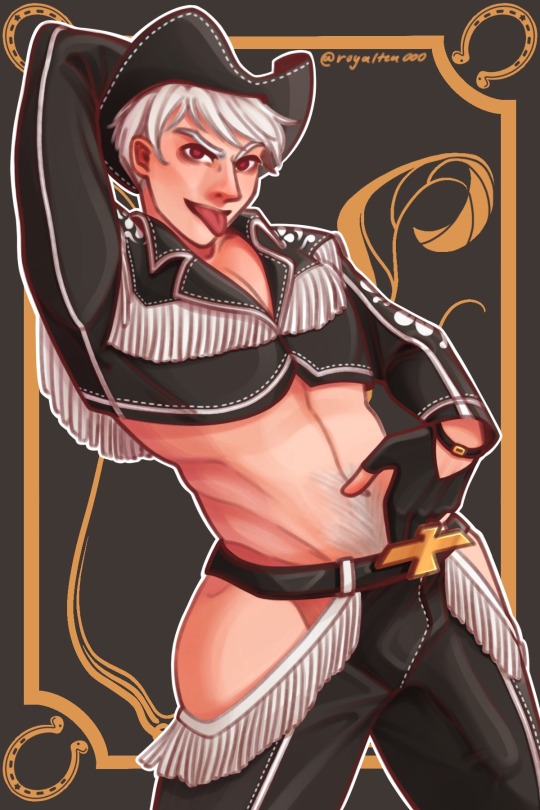
Is that a gun in your pocket or are you just happy to see me ;)
#listen.#I know.#I know very well that I cannot draw a background.#😭#please… have mercy or2#in my cowboy pinup era#gave him one HANGER of a packer#can y’all tell this is a derivative of ken’s outfit#cowboy Gil call that a cultural exchange#The exchange is that he makes Al eat the car crash raw meat porcupine thing#that thing makes me feel unwell#gave him a third fucking leg#tell you what tho I’ll never draw him using it 💀#hetalia fanart#hetalia#hws prussia#aph prussia#gilbert beilschmidt#you can’t see the second background but it’s a cow skull with twisty horns :(#fuck it just take this I’m gonna fuck it up if I work on it anymore o(-(#digital art#my art#commissions open#artists on tumblr#procreate#digital illustration#fanart#digital painting#cowboy#illustration
172 notes
·
View notes
Text
Tweetsongs' Tyranny
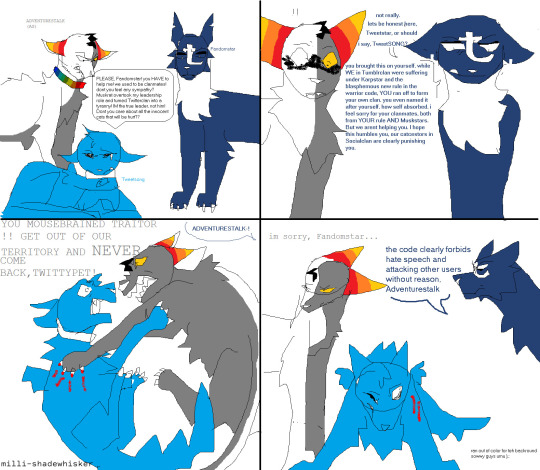
next part
#doing my part o7#does it count as gijinka if its cats#tumblrclan#twitter#elon musk#warrior cats#warriors#wc#comics#my art stuff#twitter migration#homestuck#twittypet#evilmario666 thank you for inspiring this you brave soldier#Ok this post is doing numbers so i felt i should explain that that's the personification of the HS fandom#Hetalia was supposed to be there too as a reference to fandomstuck where he was dating HS#Can't believe i just wrote that but i unironically love cringeposting wether it's to keep rent low or not#Cringe culture is dead. The only people who are really cringe are the ones ashamed about their interests.#I love you homestuck i love you danganronpa i love you warriors i love you personifications of fandoms(fandomstuck)#Adventurestalk#Fandomstar#Tweetsong#I can't believe I'm adding them as character tags but it needs to be done cuz I'm making more#Tweetsongs' Tyranny
3K notes
·
View notes
Text
Here's an absurd amount of drawings I made last week for this year's @hetalia-rarepairweek with my otps <3
(They're all in chronological order ^^)




There's more under the cut 🫶
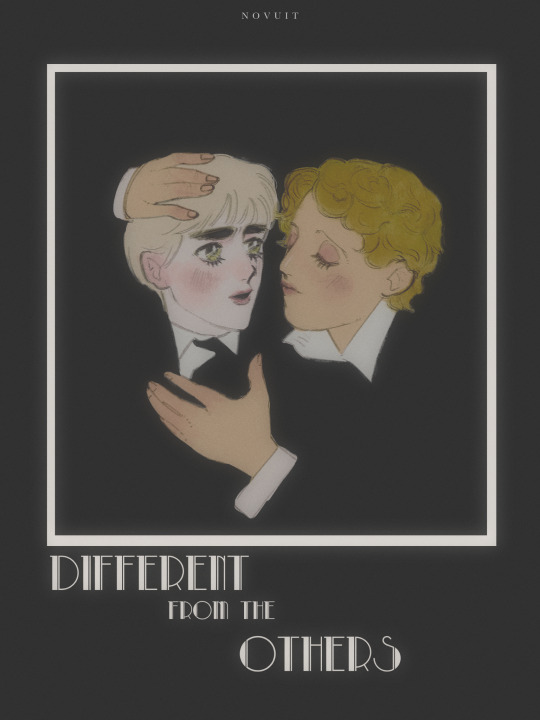
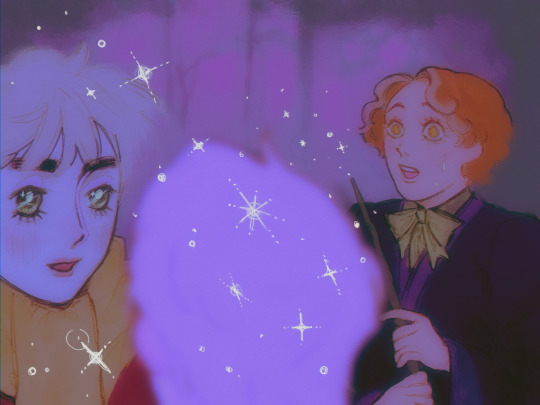

#hetalia#hws england#hws italy#engita#itaeng#angel pair#asaeng#nyotalia#2ptalia#arthur kirkland#feliciano vargas#my art#this was an excuse to use more colours lol#some aren’t finished so I may repost these seperately in the near future :)#I really wish I posted during the week event but I was so busy :')#I may talk about the culture and folklore one because i never hear anyone talk about it#it's quite obscure
394 notes
·
View notes
Text
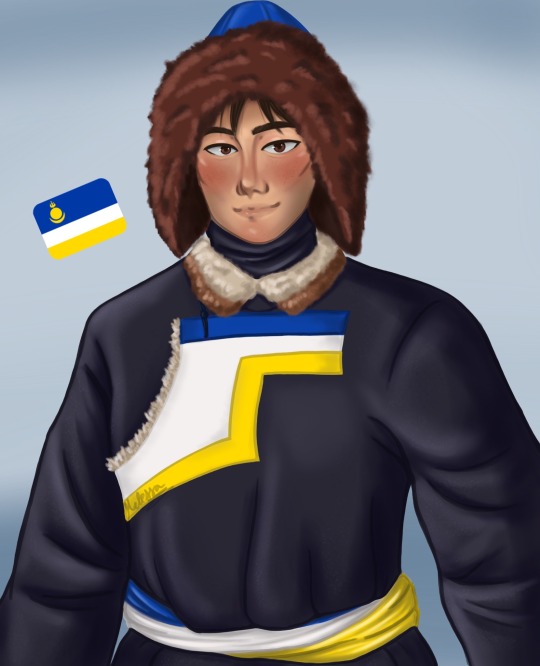
The first drawing I do for my OC Buryatia 💙
I still have to add more details and think about his name. I have thought on a bunch of names, such as Mergen (“wise”), Sodnom (“virtue”, this one has a Tibetan origin)
Perhaps his surname could be Barnzarov? Dorzhi Barnzarov was the first non-ethnic Russian to receive a PhD in a Russian university, so he was the first non ethnic Russian academic. I really love when OCs have names of notable people, that’s why I love the idea
Also, Buryatia had beef with Yakutia/Sakha, but they are more neutral nowadays. Or are they? 👀 We will see…
What do you guys think? What headcanons do you think that could fit him?
#hetalia#aph buryatia#hetalia buryatia#buryatia#aph siberia#hws Siberia#Hetalia Siberia#hws buryatia#my ocs#countryhumans#hetalia asía#hetalia north Asia#cultural hetalia#hetalia Central Asia#Aph Mongolia#hetalia Mongolia#hetalia Russia
42 notes
·
View notes
Text




EXPLANATION WILL BE IN THE NOTES bc I don't think it's fair to anyone searching for actual meaningful holiday shit to find fucking hetalia fanart anyway this might be my best drawing ever and i want to marry him. stupid sneakers and all.
68 notes
·
View notes
Note
If you're requesting things for Sweden, I'd love to see him in historical clothes! Either has a Carolean or in the outfit he wore to Gustav Vasa's coronation! I love your art and your posts always make my day. 💛
Thank you anon, your support makes my day <3 I went with something more reminiscent of the Vasa era! Yellow is a tricky color to pull off, but I wanted to try it out. He's so baby-faced..

#hws sweden#historical hetalia#culture/history stuff#my art#i tried something new with the background. we'll see if i like it
212 notes
·
View notes
Text
Summary: WW2 AU. Feliciano Vargas is a passionate, if slightly scared, Italian resistance member. Falling in love with a German fighter pilot was the last thing he expected... and it will test his national loyalty, and his heart, to their limits.
Author: George deValier
Note from submitter: Link is to a reupload/archive, as the original ff.net account was deleted somewhere around 2019. Probably the most famous/notorious Hetalia fic, written by much beloved fandom writer George deValier, as part of a larger WW2 AU known collectively as the Veraverse due to being based around songs by Vera Lynn. The mysterious account deletion after years of inactivity probably only added to the mythos.
It was absolutely the kind of fic you'd find scattered references to in the most random corners of the internet back in the heyday of the Hetalia fandom, with all the dramatics you'd expect to follow.
#official fic poll#haveyoureadthisfic#pollblr#tumblr polls#fanfiction#fandom poll#fanfic#fandom culture#internet culture#auf wiedersehen sweetheart#hetalia#GerIta#Spamano#USUK
106 notes
·
View notes
Text



Long time no sea 🌊🏄🏽♀️
I cannot believe I almost missed out on offering new Mermay art this year. 😩🙏🏽💦 I hope this is enough to make up for the radio silence from me!
(notes + omake under cut)

The larger piece is originally intended to be a drawing reference (primarily for myself because I forget lol) of my sirena!Piri. The Filipino maximalist in me cannot resist filling in the spaces so it turned into a trivia post. 🧜🏽♂️✨ I did intend a comic story ft. IndoPhil, but the plot keeps changing haha!
His coloring is based on champagne-colored South Sea pearls, and definitely also inspired by watching Marina and Dyesebel growing up (the Marian Rivera version, I did not get to see how Anne Curtis performed 💔). I just think gold looks good on him.
Those are gills on the sides of his neck and torso. When he's out of the water, they close up and do come off as scars, like with Eliza in "The Shape of Water."
He’s a marine mermaid. He can swim in freshwater, he just doesn’t like the feeling of it. Essentially, those gills stay closed and he has to come up for air to breathe like a real human.
He can turn human at will. Similar to Syrena in On Stranger Tides, although I see that example as more of a panic response. It's an ability I also want to tackle in that comic someday.
I added fish scales on his face like in mermaid makeup styles. I used a texture brush I found online, but I'm not too sure if it can be opened in other art programs. The scales all over him are also bioluminescent.
His ears are ticklish. 🤭
28 notes
·
View notes
Text


303 notes
·
View notes